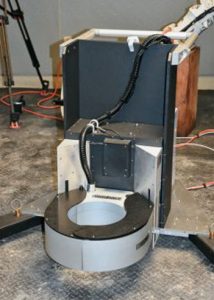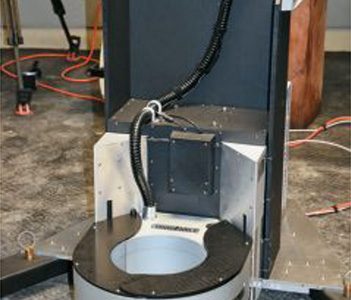As a major step forward in diagnostics to aid in Thoroughbred racehorse health, the first-ever standing positron emission tomography (PET) machine was installed on the Santa Anita backstretch in late 2019.
Dr. Mathieu Spriet, an associate professor at the University of California, Davis, developed the
Longmile Positron Emission Tomography (MILE-PET) Scan machine at the university in partnership
with the Brain Biosciences and Longmile Veterinary Imaging Division. The PET machine at Santa Anita

The PET machine at Santa Anita
Dr. Jeff Blea, a racetrack veterinary practitioner since 1994, noted the advantages the PET scanner brings, saying: “The PET scan at Santa Anita, in conjunction with the relationship with Dr. Spriet and his colleagues at UC Davis, has allowed veterinarians here in Southern California to advance the diagnosis and treatment of musculoskeletal issues in race-horses well beyond anyone’s expectations. This pioneering technology certainly has been, and will continue to be, a positive game changer for horse safety.”
Dr. Blea, a past president of the American Association of Equine Practitioners and the Southern California Equine Foundation, serves as a trustee of the California Thoroughbred Foundation. The Foundation, dedicated to the advancement of equine research and education, regularly funds scholarships to veterinary students in an effort to further Thoroughbred racehorse health and safety.
As such, the Foundation applauds the industry for coming together to bring the PET scanner to Santa Anita. It was a joint effort of many, with The Stronach Group and the Dolly Green Research Foundation providing the principal funding for the equipment, which has been installed in the nuclear medicine facility, run by the SCEF.
With just over a year in use, the equipment is proving invaluable in keeping California’s equine athletes sound.


